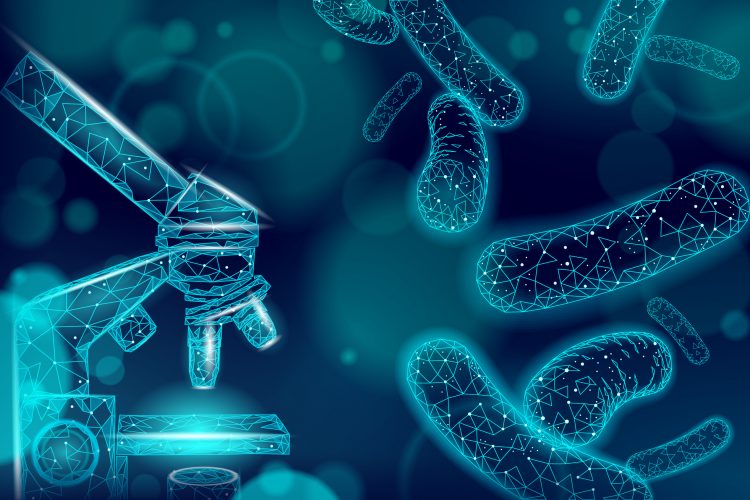The microbiome: unlocking the Fourth Industrial (Bio) Revolution
Posted: 4 February 2022 | Anthony Finbow (Eagle Genomics) | No comments yet
The impending ‘Bio Revolution’, with the microbiome at its foundation, offers ground-breaking solutions and a wealth of opportunity in data science and bioinformatics, explains Anthony Finbow of Eagle Genomics.


You might have already heard about the ‘Fourth Industrial Revolution’ and thought that it relates purely to automation and machine learning. In fact, biology will be the main driver for this new economy.
Introducing the ‘Bio Revolution’: a new wave applying biology to transform design and production capabilities, which is anticipated to drive sustainable innovation across numerous industries and generate up to $4 trillion a year over the next couple of decades, according to McKinsey.1
The notion overlaps with the emerging concept of ‘Nature Co-Design’ that also relates to the new industrial revolution – harnessing nature’s own design principles and manufacturing methods to produce beneficial new materials and other solutions.2 It has been suggested that economies that embrace these concepts will outperform their competitors, by creating sustainable value chains that are designed to evolve with customer and environmental needs. These economies will simultaneously generate innovations to help rescue our planet from climate change and other grand challenges such as ensuring a secure and nutritious food supply for our growing population and tackling anti-microbial resistance. Such innovations could involve utilising microbes for sanitary surveillance and water recycling; bioengineering drought- and pest-resistant crops; generating improvements to artificial meat and alternative proteins; and even providing new fossil-free routes to producing chemicals, plastics, fuels, materials and textiles.
The unit of currency in this revolution will be the microbe, as the microbiome in particular, is set to provide the key through which these changes and technologies will be unlocked.
The microbial heart of the Bio Revolution
Microbiota – the ecosystem of microorganisms co-existing inside and outside our bodies, as well as in our environment – is a critical component of the Bio Revolution. It has become increasingly apparent that the human microbiome plays a critical role in all aspects of health, from metabolic conditions and infectious disease through to patients’ response to chemotherapy, and even overall mood and wellbeing. Perhaps the greatest developments in microbiome therapeutics so far have occurred in gut-related diseases. This realisation has led to the accelerated development of approaches attempting to harness the microbiome, with researchers now convinced that untapped microbiome ecology holds the answer to treating and/or preventing a number of chronic conditions.
Complex multi-omics data and the data science gap


Realising this potential and handling complex, multi-dimensional data relating to the microbiome is a significant challenge. A February/March 2020 survey conducted with multi-omics personas including scientists, researchers, informaticians and IT personnel from the biopharmaceutical industry, shows researchers are struggling to manage complex multi-omics data.3 As an example, scientists spend on average 40-80 percent of their time just finding, categorising, organising and validating input data sets. This clearly speaks to the need for accepted data standards, accessible data curation tools and industry-wide data management methods.
In addition, researchers may find themselves unable to access the requisite tools and techniques for multi-omics analysis due to the gap between the biological and data science expertise that represent either end of the data generation and analysis spectrum. Similarly, few data science professionals are fully versed in data generative processes such as biological sampling, nucleic acid extraction, sequencing and bioinformatics analysis.
The good news is such challenges are not insurmountable. While it is imperative that robust systems are used to combine and manage datasets as a foundation for innovation and discovery, a new class of tools, combined with more standardised approaches to understanding and gaining insights from data, are emerging that could unlock the promise of the microbiome to better support the the Bio Revolution.
Multi-omics data management
Effective multi-omics data management requires technology and platforms that can easily ingest large volumes of information, process it and provide valuable outputs. Technological platform players have been addressing challenges related to microbiome data analysis with tool stacks that can help perform contextualised data capture, curation and reporting on microbiome experiments and data. Such platforms are starting to enable consumers of data, scientists, data scientists, product marketers, researchers, members of legal and compliance, and line of business owners to quickly see how complex data can be productively applied and translated into innovation.
Bioinformaticians and data scientists are also starting to work together to build a whole new layer of data and information into their repertoire of analysis, using advanced tools to handle the deluge of data and information.
Untangling complexity
A new industry of multi-omics and real-world data management software has arisen to help scientists understand and apply complex data. R&D teams are generating innovation and accessing options for environmental sustainability and renewal using data fabrics,4 for example, which ensure comprehensive sets of microbiome-related data are available and can be exchanged, compared and understood in meaningful ways by non-data scientists.
A new industry of multi-omics and real-world data management software has arisen to help scientists understand and apply complex data”
Artificial intelligence (AI) and machine learning (ML) models are playing a key supporting role, helping decode patterns that might not be obvious to human observers. In addition, advanced application of the causal inference programming approach has great promise for microbiome researchers.5 In simple terms, causal inference is the process where causes are inferred from data. Causal inference work and network science delivers great potential for understanding the environmental role of the microbiome by revealing causal relations in diverse data, allowing scientists to design new studies to validate these relations and delve deeper into root cause analysis.
Ground-breaking solutions to global challenges
The hugely-promising but nascent microbiome industry is slowly but surely accelerating. Other industries that have been able to leverage data effectively have gone on to deliver great rewards that benefited both the economy and wider society, for example aviation and/or computer-aided drug discovery. In the same way, improving our understanding of the microbiome is set to significantly contribute to our understanding of biology, ultimately translating to a better quality of life for all.
Looking forward, a deep, data-driven partnership between the life sciences, data science and bioinformatics is coming. Companies that embrace the Bio Revolution will outperform rivals by creating sustainable value chains delivering innovations that could genuinely save the planet.
About the author
Anthony Finbow, is Chief Executive Officer at Eagle Genomics Ltd, a Cambridge, UK-based pioneer in applying network science to biology and which is working with five of the top 10 household and personal care companies in the world to create new products working in harmony with the human and environmental microbiome.
References
- Chui M, Manyika J, Evers M, Zheng A, Nisbet T. The Bio Revolution: Innovations transforming economies, societies, and our lives [Internet]. McKinsey Global Institute; 2020. Available from: https://www.mckinsey.com/industries/life-sciences/…
- HELLO TOMORROW and Boston Consulting Group. Nature Co-Design: A Revolution in the Making [Internet]. HELLO TOMORROW SAS; 2022. Available from: https://hello-tomorrow.org/bcg-nature-co-design-a-revolution-in-the-making/
- Conway J. The Next Generation Multi-omics Informatics and Systems [Internet]. 20/15 Visioneers. 2020 [cited January 2022]. Available from: https://20visioneers15.com/blog/f/the-next-generation…
- Gupta A. Using Data Fabric Architecture to Modernize Data Integration [Internet]. Gartner. 2021 [cited January 2022]. Available from: https://www.gartner.com/smarterwithgartner/…
- Wang K. Implementing Causal Inference: Trying to Understand the Question of Why [Internet]. Medium. 2020 [cited January 2022]. Available from: https://towardsdatascience.com/implementing…
Related topics
Artificial Intelligence, Big Data, Biologics, Data Analysis, Drug Development, Genomics, Industry Insight, Informatics, Microbiomes, Proteomics, Research & Development (R&D), Technology, Therapeutics









